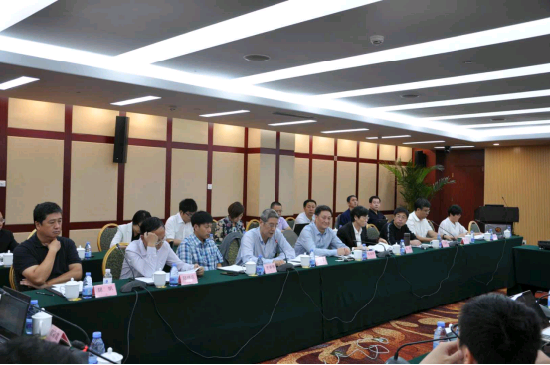On September 21, an expert panel from the High-Tech Research and Development Center under the Ministry of Science and Technology conducted medium-term inspection on the “Technological Research and Engineering Demonstration of Integrated Control of Pollutants (SO2, NOx, PM) from Coal-fired Boilers” project initiated by CECEP Industrial Energy Conservation Co., Ltd.

Since it began two years ago, the project has been focused on the research and development of coal-fired pollutants (SO2, NOx, PM) integrated control technologies, with significant progress made in fields such as competition between substitution and elimination reactions/ coupling mechanism, theory on collaborative optimization control of integrated pollutants elimination and the establishment of an energy efficiency evaluation system. It has developed key equipment such as intermetallic compound film dust collectors and large ozone generators and set up full-process pilot test devices, offering new approaches for collaborative elimination of coal-fired pollutants (SO2, NOx, PM), as well as considerable theoretical results and experimental data for the research of a coal-fired pollutant removal mechanism. The expert panel provided positive recognition of the project’s progress and predicted its future development. It also delivered constructive opinions and suggestions on pilot platform for high-temperature dedusting (50,000 Nm3/h) and pollutants elimination through spraying and scattering (100,000 Nm3/h), the bridging between research results and demonstration projects, project results review, project risk assessment and countermeasures, as well as the use of funds.
Launched in July 2016, the national key R&D project “Technological Research and Engineering Demonstration of Integrated Control of Pollutants (SO2, NOx, PM) from Coal-fired Boilers” is committed to the development of reaction mechanism and technological research of integrated elimination of coal-fired pollutants. The emission levels of its demonstration project are better than the national standards, with smoke (PM) emission at or below 5 mg/Nm3, SO2 emission at or below 25 mg/Nm3, and NOx emission at or below 5 mg/Nm3. Application of the technologies of integrated control of pollutants from coal-fired boilers is expected to reduce the cost of traditional boiler construction by 4 percent and reduce the operational cost by 8 percent, thus effectively resolving the outstanding conflict between local environmental health and economic benefits of power plants. The full-process demonstration project for pollutants elimination provides an experimental base for the research of atmospheric control and pollutants elimination by scientific academies and universities, and blazes a new trail for China’s clean utilization of coal and development of new energy-saving technologies.